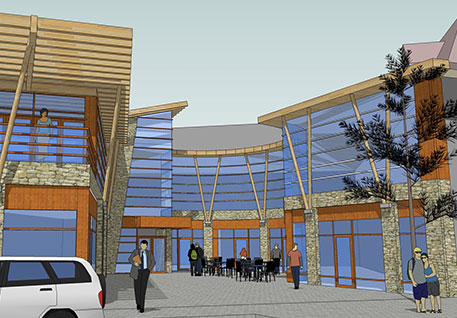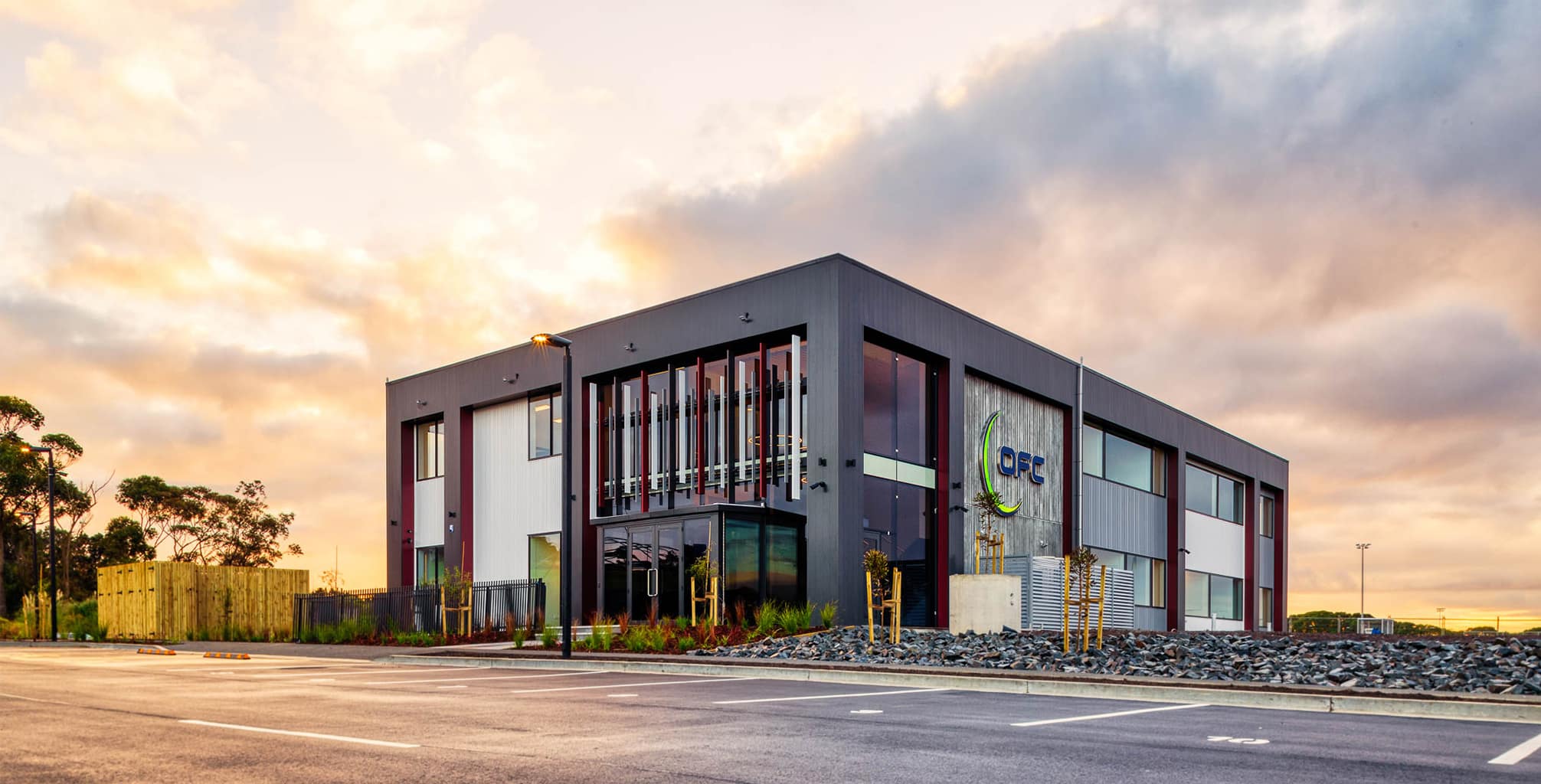Introducing the Comprehensive Solutions Offered by Commercial Architects for Modern Developments
Commercial Architects serve a critical function in contemporary advancement tasks. They blend style looks with performance while sticking to regulatory demands. Their know-how extends beyond plain building, integrating lasting methods and ingenious technologies. As they navigate complex zoning laws, Architects team up with different stakeholders to bring visions to life. This multifaceted technique questions concerning the progressing role of Architects in shaping contemporary areas and the influence of their deal with future advancements.
Understanding the Role of Commercial Architects in Modern Advancement
In modern urban landscapes, Commercial Architects play a vital function in forming functional and visual rooms that satisfy varied business requirements. Their knowledge extends past mere style; they navigate intricate zoning regulations, developing codes, and ecological laws. By teaming up with clients, they identify certain requirements, making sure that each job straightens with the customer's vision while likewise thinking about sensible facets such as sustainability and cost-effectiveness. Commercial Architects are experienced at incorporating ingenious innovations and materials right into their designs, enhancing both the functionality and power efficiency of structures. They perform complete site analyses to assess the potential difficulties and opportunities offered by an area. Furthermore, effective interaction with service providers and other stakeholders is essential, ensuring that the job proceeds smoothly from perception to completion. Inevitably, Commercial Architects are important in developing spaces that not just satisfy practical functions yet likewise add to the total character and vibrancy of city environments.
Idea Style: Changing Concepts Into Fact
Concept design works as a necessary phase in Commercial design, where cutting-edge design remedies emerge from imaginative brainstorming. This procedure depends on joint ideation, bringing together diverse viewpoints to refine and enhance initial concepts. As concepts take shape, they transform from abstract concepts right into concrete building truths.
Cutting-edge Style Solutions
Transforming concepts into truth is the trademark of innovative style options in Commercial architecture. These solutions mix creativity with functionality, addressing the special demands of modern growths. By leveraging innovative innovations and lasting methods, Architects craft rooms that are not just aesthetically appealing however also efficient and versatile. Emphasis on customer experience drives the style process, making sure that atmospheres foster performance and partnership. Each job benefits from a customized method, where concepts are thoroughly developed to reflect the customer's vision while taking into consideration future fads. Cutting-edge layout options also focus on adaptability, permitting adjustments over time as service needs develop. Ultimately, these strategies improve the overall value of Commercial spaces, making them essential in today's competitive landscape.

Joint Ideation Process
Partnership works as the foundation of the ideation process in Commercial architecture, fostering imagination and development among diverse stakeholders. Architects, clients, designers, and area members participate in vibrant conversations, ensuring that all perspectives are thought about. This inclusive method permits the expedition of different design principles, motivating distinct remedies that line up with the project's vision. Via workshops and conceptualizing sessions, concepts progress and improve, changing preliminary concepts right into concrete designs. Technology additionally plays a pivotal role, with devices such as Building Info Modeling (BIM) promoting real-time collaboration and adjustments. Inevitably, this collective ideation process not just boosts the style outcome however likewise grows a feeling of ownership and investment amongst all parties involved, bring about effective Commercial advancements.
Zoning Evaluation: Browsing Regulations and Conformity
As developers start on brand-new tasks, understanding zoning laws is vital to ensuring compliance and avoiding pricey delays. Zoning analysis plays a vital function in this procedure, as it includes examining neighborhood zoning regulations that dictate land use, building height, density, and setbacks. Commercial Architects possess the competence to browse these complicated regulations, assisting customers recognize allowable usages and any type of necessary variations.
Lasting Layout Practices: Structure for the Future
Sustainable design methods are significantly vital in the domain of Commercial design, specifically as ecological concerns proceed to intensify. Architects focus on environmentally friendly materials, energy-efficient systems, and style techniques that decrease waste and environmental impact. Incorporating renewable resource resources, such as photovoltaic panels and wind generators, allows structures to generate their own power and decrease reliance on fossil fuels.Furthermore, lasting design stresses the value of interior environmental quality. This includes using all-natural light, enhancing ventilation, and selecting non-toxic products to improve resident wellness and efficiency. Eco-friendly roofs and living wall surfaces are likewise preferred features that add to biodiversity and metropolitan cooling.Additionally, Commercial Architects often integrate water preservation strategies, like rain harvesting and drought-resistant landscaping. Through these innovative approaches, they produce spaces that not just meet contemporary requirements but additionally promote a sustainable future, addressing the expanding demand for responsible advancement in the modern-day world.
Task Monitoring: Ensuring Timely and Effective Implementation
Efficient project monitoring is click over here crucial for making sure that Commercial architecture tasks are completed promptly and within budget plan. This duty encompasses a series of duties, including the coordination of various stakeholders, timelines, and sources. Commercial Architects leverage their competence to create detailed job plans that lay out critical landmarks and deliverables, enabling for methodical progression tracking.Regular communication amongst staff member and customers is important, cultivating transparency and facilitating timely decision-making. Risk monitoring techniques are additionally used to identify possible difficulties early, enabling aggressive solutions to be created. By utilizing innovative task management tools, Architects can keep an eye on job efficiency in real-time, making changes as necessary to maintain efficiency.
Interior Decoration: Producing Useful and Visual Spaces
Interior decoration plays an important function in improving both capability and visual appeal within Commercial areas. Efficient room planning can maximize workflow and enhance individual experience, while aesthetic design concepts add to a visually appealing environment - commercial architects. Together, these aspects produce rooms that are not only useful however likewise motivating
Room Planning Efficiency
While making best use of the energy of available room, Commercial Architects focus on room preparation efficiency to create both practical and visually pleasing settings. This approach includes mindful analysis of the spatial format to ensure ideal use of every square foot. Architects consider variables such as process, access, and natural light to improve functionality. By strategically positioning furnishings, tools, and workstations, they facilitate motion and communication among users, advertising efficiency. In addition, zoning various areas for particular features helps in managing noise and privacy, producing a harmonious environment. Via effective space preparation, Commercial Architects can change restrictions right into opportunities, ensuring that each area fulfills the diverse needs of its occupants while adhering to governing requirements and sector standards.
Visual Layout Principles
Visual style principles play an essential function fit settings that are not only functional but additionally visually attractive. These concepts guide Commercial Architects in producing spaces that reverberate with customers while enhancing brand identity. Crucial element include balance, percentage, and consistency, which work together to create a cohesive appearance. Shade systems and materials are thoroughly chosen to evoke preferred emotions and support the general style. Furthermore, lighting plays a crucial function, affecting state of mind and presence while highlighting building functions. By incorporating these concepts, Architects assure that rooms are not just practical yet additionally welcoming and inspiring. Inevitably, efficient aesthetic design fosters a positive customer experience, urging engagement and contentment in Commercial atmospheres.
Collaboration With Stakeholders: Promoting Effective Partnerships
Successful partnerships in Commercial design depend upon reliable partnership with stakeholders, guaranteeing that every voice is heard and valued. This joint technique includes interesting different events, consisting of clients, professionals, and neighborhood participants, throughout the layout and growth procedure. By fostering open interaction, Commercial Architects can address concerns, gather understandings, and align the project's vision with stakeholder expectations.The combination of varied point of views boosts creativity and advancement, leading to even more practical and aesthetically pleasing styles. Normal meetings, comments sessions, and workshops facilitate this discussion, allowing Architects to adjust their plans in action to stakeholder input. In addition, developing count on with transparency and responsibility strengthens these collaborations, causing a smoother job execution.Ultimately, the success of modern-day advancements depends on the Architects' ability to navigate and balance differing passions, developing a collaborative environment that promotes shared objectives and common success.
Often Asked Questions
Exactly How Do Commercial Architects Manage Budget Plan Constraints During a Job?

What Kinds of Software Do Commercial Architects Commonly Make Use Of?
Commercial Architects commonly use software program such as AutoCAD for composing, Revit for Structure Information Modeling, SketchUp for 3D modeling, and job monitoring devices like Microsoft Task to enhance partnership and enhance process throughout the style process.
Can Commercial Architects Assist With Getting Funding for Projects?
Commercial Architects can aid in acquiring funding for projects by preparing in-depth propositions, aiding to verbalize layout visions, and supplying economic forecasts that can improve the possibility of securing essential financing from capitalists or economic establishments.
How Do Architects Guarantee Safety Throughout the Building Process?
Architects guarantee safety throughout building by executing extensive layout requirements, coordinating with designers, performing regular site inspections, sticking to neighborhood guidelines, and promoting communication amongst all stakeholders to alleviate dangers and promote a protected working environment.
What Continuous Support Do Architects Offer After Job Conclusion?
After project conclusion, Architects supply continuous support with maintenance assessments, efficiency evaluations, and layout modifications. They assure structures meet evolving needs, address potential concerns, and maintain conformity with regulations, fostering a long-lasting relationship with clients.
Comments on “7 Questions to Ask commercial architects”